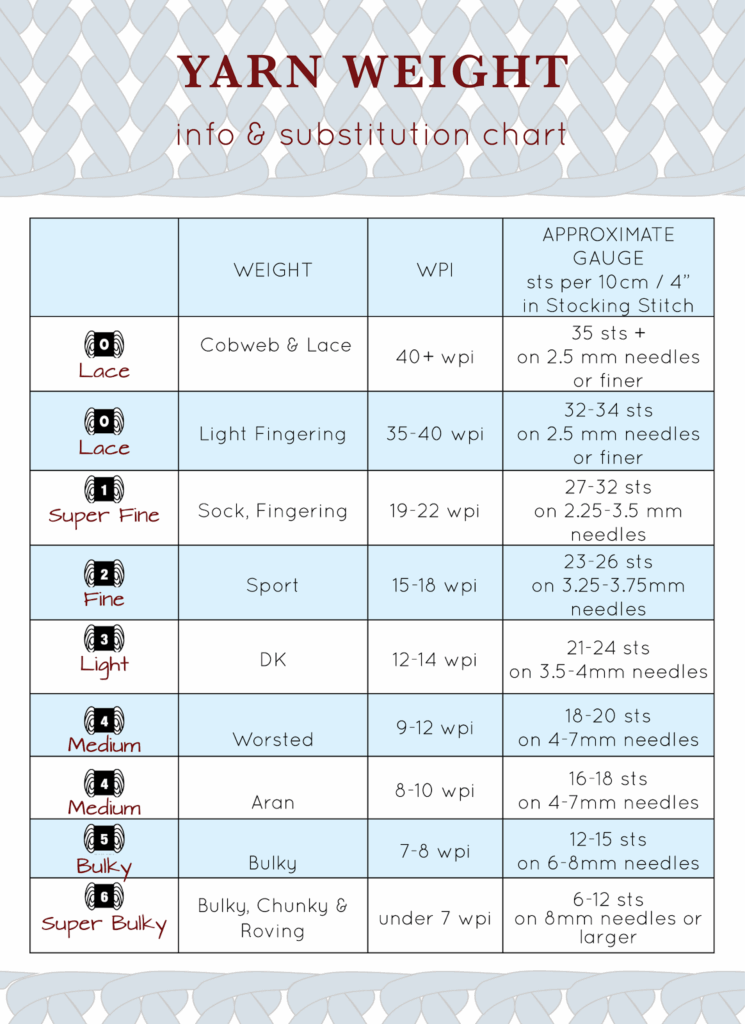When it comes to knitting, one of the most important factors to consider is the weight of the yarn you are using. Yarn weight not only determines the thickness of the yarn but also influences the size and drape of the finished project. Different yarn weights are suitable for different types of projects, so it’s crucial to understand the various yarn weights available.
Yarn weights are categorized using a numbering system from 0 to 7, with 0 being the finest and 7 being the thickest. Each weight has a recommended range of needle sizes and gauge, which helps knitters choose the right yarn for their project. It’s essential to refer to a knitting yarn weight chart to ensure you are using the correct weight for your pattern.
Knitting Yarn Weight Chart
Common Yarn Weights
One of the most common yarn weights is fingering weight, also known as sock yarn. This weight is perfect for lightweight and delicate projects such as socks, shawls, and baby garments. Sport weight yarn is slightly thicker and is ideal for sweaters, scarves, and hats. Worsted weight yarn is a popular choice for a wide range of projects, including blankets, afghans, and accessories.
Bulky weight yarn is great for quick projects like hats and cowls, while super bulky yarn is perfect for cozy blankets and winter accessories. Understanding the characteristics of each yarn weight will help you choose the right yarn for your project and achieve the desired outcome.
Choosing the Right Yarn Weight
When selecting yarn for a project, it’s essential to consider the yarn weight recommended in the pattern. If you’re substituting yarn, make sure to choose a yarn with a similar weight to avoid changing the size and drape of the finished item. Refer to a knitting yarn weight chart to compare different yarn weights and make an informed decision.
Experimenting with different yarn weights can also add versatility to your knitting projects. You can create unique textures and patterns by using a lighter or heavier weight yarn than what is specified in the pattern. Just remember to adjust your needle size and gauge accordingly to achieve the desired result.
